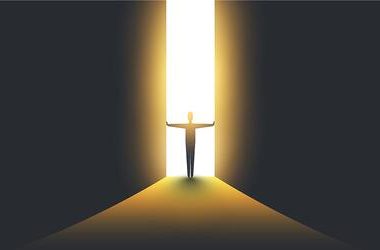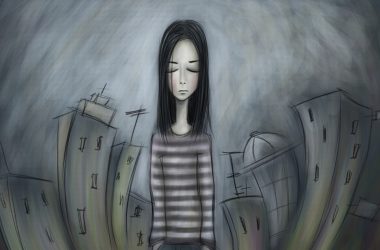In the first sentence that introduces this thoughtful compilation of essays, editor Shreya Ila Anasuya notes, “Stories make up the fabric of the world” (p. 8). Weaving together 46 essays across twelve sections – mind, body, romance, friendship, sex, work, violence, marriage, self, children, discrimination and myths – the introduction foregrounds the importance of the rich personal narratives that appear in this volume. Each essay is an entry point into a world at the intersections of various parts of life that are shaped by the sexuality and gender of disabled people, a world that is both marked by major life events as well as one that is shaped by the quiet everydayness of the authors’ embodied experiences. The various essays remain in conversation with each other, affirming and re-creating a world that firmly refuses to view disability as a disadvantage or disabled people’s gender and sexuality as a source of shame, while also acknowledging the many barriers that are thrown at minoritized people.
Although this review will not be able to do justice to the depth contained within each essay, I hope to be able to note here what stood out for me as I engaged with this volume. The loose organization of essays within themed sections at once allows for a subset of essays to be read together, should you so choose, while also noting the porosity between the sections, a nod to the ways in which our lives are not neatly contained, our beginnings and endings demarcated, sometimes intertwined. These essays emerge from the weekly essay series, Skin Stories, after which this volume is named. Talking about the purpose of the series in a piece on the body, “If Our Pain Isn’t Seen, Where Do We Go?”, Shreya Ila Anasuya notes that all of these skin stories are “about what it is like to be inside the skin of someone who is somehow left out of the River of Everyday Stories…about inhabiting…bodies and minds…which are unimaginatively, often unkindly, labelled ‘Other.’” (p. 70). These stories of being Othered are conveyed through a variety of forms – some as first-person narratives from authors who chose to identify themselves and others from authors who write anonymously, as well as some by authors who tell the stories of others who are disabled. A few authors have included multiple pieces across sections on their experiences, all of which are a delightful contribution to a larger attempt to create a disabled community.
Several authors drive home the need to continually unsettle the idea that disability is extraordinary or abnormal. For instance, in “Behind Aditi’s Corner is A Young Woman in Control of Her Own Narrative,” Zarah Udwadia asks, “What are we saying about Down Syndrome when we call the condition something that people ‘suffer from,’ or something to ‘defeat’? When we transform someone, who lives with Down Syndrome into an inspiration, a spectacle, for simply living?” (p. 135). Elsewhere, in the essay, “As A Woman with A Disability, I’m Either Seen As ‘Helpless’ or ‘Heroic’,” Preeti Singh notes, “Having a disability has its challenges, but it’s not bad, and it’s certainly not sad…the most extraordinary thing about us is that we are ordinary.” (p. 243). In “I Live with Blindness, But It Is Not the Hardest Thing I Have To Deal With,” Nidhi Goyal remarks, “…when you’re disabled, people assume that disability is the bane of your existence, that nothing can worry you more” (p. 50). Each of the essays is a testament to all of the other little, big and in-between things that form of a part of living with a disability, together with an acknowledgement of several systemic barriers that contribute to oppression.
The volume both implicitly and explicitly moves away from the idea that disability and queerness are spectacles by highlighting each author’s attempt to make a home for themselves physically, intellectually and emotionally. It is this home that several authors seek to re-claim – poignantly, in “Why I Call Myself A Schizophrenist,” Reshma Valliappan writes of the alienation that results from widespread community disdain, stating, “I am not an alien. I am human and this is my planet” (p. 195). Additionally, in “‘An End Without an End’: Finding My Way to Myself As A Person Living With Quiet Borderline Personality Disorder,” Arpita writes about the contrast between an inside life and an outside life, stating, “Everything I did, everyone I met, was a means to a singular end – finding myself. An end without an end” (p. 179).
Simultaneously, however, a few essays in this volume pay particular attention to the ways in which oppression on the basis of one’s ability, gender and sexuality also intersects with caste. In “Navigating Healthcare as A Dalit, Non-Binary Person with Debilitating Social Anxiety,” Rachelle Bharati Chandran writes, “Isolation for the oppressed is not chosen. It is an inevitability. We are unable to navigate this world without constantly hearing about Dalit merit and reservation.” (p. 232). Christina Thomas Dhanraj, in “I’m a Dalit Woman, And My Mental Health Matters,” echoes the strong role that caste plays in exacerbating systemic oppression, pointing clearly to how Dalit women’s mental health is attacked by personal and professional relationships that deny caste through a series of constant micro and macroaggressions (p. 28). Finally, in “If You Want the Full Story, You Have to Start with Our Love Story,” Neha Margosa writes about the relationship of trans rights activist Kiran and his wife Manasa, detailing the ways in which they are multiply marginalized in their everyday interactions.
As several essays, particularly those in the section on friendship, also note, these pieces and the beautiful illustrations that accompany them are powerful for the role they play in creating a community of writers and readers who are interested in these personal narratives for the generous, often hopeful insights that they offer. In “When Trauma Follows You Home: What Love Means to Me as a Queer, Non-Binary Person,” Upasana Agarwal writes compellingly about the centrality of community, stating: “People want us to define ourselves and fit the unhappy boxes they build. When researchers and journalists interview us, they ask us, “What issues are you facing in society?” and we have to perform our pain over and over again. No one asks, “What holds you together every day when people try to stare you out of existence?” We hold each other.” (p. 38). Reading this volume reminded me that there were other people and communities, even ones that I may not know in real life, who hold me. As a disabled, queer, non-binary person, I held on to every quote and anecdote, following each writer’s insights with gratitude for the ways in which they spoke to my own life. This book was an enormous treat to read – it simultaneously made me feel like the end couldn’t come fast enough, because I wanted to know at once what every author was thinking and saying, but also that the end had come altogether too soon — I returned several times to each essay after I had read it, wondering if this review would be able to capture how swiftly each author’s writing had opened the doors of my mind.
Note: When the book was first published, Point of View had an Instagram contest that offered three copies to readers, and I was lucky enough to win one of these copies.
Kim is an educator, activist, lapsed writer and graduate student currently based between India and the US. They work on gender, disability and sexuality. They are on Twitter and Instagram as kimmerrlee.



